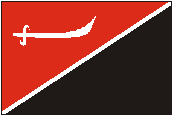
NUHURA TERONG

| Area - 856 kmē -
Sutumai, 223 kmē; Dodo, 210 kmē; Narik,
155 kmē; Hakerehe, 123 kmē; Matutu, 93 kmē; Lopes
Gusmao, 52 kmē.
Population - 117,000 inhab. - Narik, 27,000; Sutumai, 26,000; Dodo, 20,000; Matutu, 19,000; Hakerehe, 15,000; Lopes Gusmao, 10,000. (2015) Density - 137 inhab./kmē Major Cities - Misuwai, 21,000; Nikai, 19,000; Santakrus, 19,000; Kelondo, 14,000; Hakerehe, 11,000; Lopes Gusmao, 10,000. Dialects - Kauta Lasahi, 27,000; Terong, 55,000; Forti (Lopes Gusmao, Matutu and Hakerehe), 32,000; Hakerehe (Hakerehe), 2,000; Atawodo (Homafak), 1,000. Religions - Christians (Forti), Animists (aborigines). |
Mining - salt,
in Narik.
GDP per Capita - KAH 30,185.00 yearly (2015) Participation in the GDP - 2% Industry - Food. Agriculture - Rice, coconut, coffee, fruits and sago; fowl and pork. Climate - Equatorial (monsoon); average temperature in the rainy season, 27šC and, in dry season, 25šC. Rain: 2,350 mm yearly. Major Peak - volcano Ra'u 837 m, in the island of Narik. Rivers - Motehe, Behambili, Ila and Riomolo. Name Origin - Terong derives from "tasi terong", that means "central sea" in Kaupelanese. |